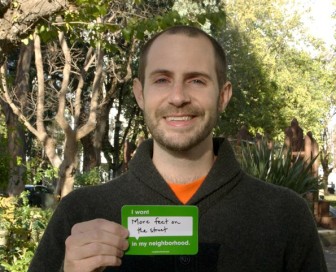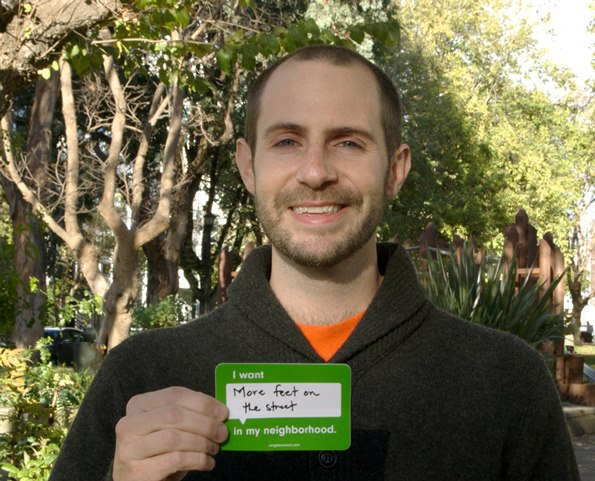 1. Why are you running for city council?
1. Why are you running for city council?
I’m a designer/urban planner + NC State/UNC alum working with communities around the country to shape healthier, more vibrant and economically prosperous neighborhoods for people to thrive. My projects WalkRaleigh, RaleighBeach + Wanderbox serve as precedents for innovative community development across the country.
I believe there are voices missing from the table, both voices new to Raleigh and younger citizen voices, that I can represent and bring my knowledge from working with cities around the country to offer new ideas, energy and solutions that will guide our next couple decades of growth and prosperity.
2. What is the biggest challenge currently facing the city, and what would you propose to do about it?
Development, we need to grow together: I would encourage new, thoughtful and balanced development — prioritizing close-knit, walkable neighborhoods that plan for people to walk and to bike — supporting current and future transit — while helping to minimize congestion, maintain affordable living and bolster affordable housing.
All of which allows the preservation of our neighborhoods, while creating more public parks that help attract new talent to our urbanizing centers. It is critical that we continue to provide housing and jobs for the 60-70 (depending on your source) people moving to Raleigh each day. People must be the forefront of our policy.
Communication, voices are missing from the conversation: I would create people-sized communication and civic engagement channels. We need quick, easy to understand and engaging ways to connect with citizens around the issues that matter and meet residents where they are. By using simple online videos and write-ups with ideas like a mobile City Hall truck we could more effectively deliver information, updates, challenges and opportunities to all residents throughout Raleigh.
For my campaign, I am leading through action and inviting residents to share ideas about how to make Raleigh better on Neighborland, an easy-to-use online community tool for communication. I am also posting my own ideas for to better Raleigh, such as alternative affordable housing ideas, transportation needs, and innovative communication strategies.
Creative new solutions are needed: I want to bring a new approach to council that builds on my entrepreneurial experience of building city-focused businesses. There are new ways to try ideas before we commit large sums, what I like to call ‘test before you invest’ approach — not just in policy but in practice, use data to drive decision-making, and take more creative approaches to public-private partnerships to unlock economic development opportunities and continue to grow jobs in our exciting city.
3. A text change ordinance was recently passed restricting sidewalk dining, was this the right move? Why or why not? What kind of balance should be struck between revelers & residents?
No. As a resident, my understanding was that the two main issues were public-right-of-ways were being unobstructed and noise levels were too high. The text change is a change, not a pilot from my understanding, meaning if it is not changed again, we are stuck with it. No enforcement was done with respect to the original rules, meaning bars were not enforced to keep the right of way clear and no measurements were taken of noise levels.
This troubles me. The text change was reactionary, and did not test any temporary solutions before changing the actual rules. Since no enforcement or measurement was taken initially, we have no idea if the new rules are successful or not. Balancing the needs between downtown being a neighborhood and a vibrant city center is certainly critical.
Fortunately, we have already successfully overcome this issue in downtown in Glenwood South. Over the last few years, both business owners and residents came together and figured out how to respect each other’s needs, desires and realities to peacefully and respectfully coexist as downtown neighbors in an exciting new core neighborhood.
As Raleigh grows, we have to remember we are all neighbors — and need to respect each other as neighbors. The Glenwood South neighborhood group could function as initial community allies or help shape best practices for residents and business owners to work together on our continual growing pains.
My vision for a successful downtown includes a healthy mix of both commercial and residential living — this includes affordable housing, public parks, a grocery store, more density, good design, bike share, dedicated bike lanes, sidewalk dining, better bus service, public art, and slow, safe streets for everyone on foot, on bike or in a car.
4. Raleigh has ended up on a lot of Top Ten lists in recent years. Why do you think that is?
Raleigh has a great mix of culture, education, jobs, history, southern hospitality, and 21st century innovation — making it a really interesting place to be right now. Coupled with a modest cost of living and our amazing parks, greenways, and art institutions, we have a lot to offer for folks who want to live a more urban lifestyle, a more suburban lifestyle, or something in between.
5. Council is currently considering a rezoning case that would remap a significant portion of the city. Should this be approved as is, with changes, or not at all (back tot he drawing board). Why or why not?
The UDO development process has been very long, but judging by reactions over the last few months, many residents had no idea it was in the works, nor how it could impact them. To me, this shows that there was a fundamental disconnect between the city and residents regarding this topic. If residents had been a bigger part of the development process, and had more time to understand implications of the new zoning, I believe there would much less pushback about density and neighborhood livability if residents were involved earlier.
After speaking with residents who attended some of the targeted UDO discusses that planning led in different neighborhoods, many residents just needed some clarification that this process did not mean that they would lose their building, office, or workspace.
Additionally, the flexibility of the UDO, which is needed for our diversifying growth and demand for infill development, is ultimately a benefit and huge advantage of the new zoning — but having sensitivity to existing conditions, character, history and existing business seems like it was overlooked in some areas.
I’m not familiar with how many of these new neighborhood centers were redrawn, but many voices were missing. So if we were to do it again, new efforts, both online and offline, would need to happen to welcome the community to the table to give their input and offer opportunities to learn about the changes. Additionally, why couldn’t we have a pilot UDO zone somewhere in the city? By testing before investing in the full plan, we could have worked out many kinks and shown what is possible through the new zoning.
6. What is the best and what is the worst decision made by city council over the past two years, and why?
The best thing is definitely Dix. Fighting for that as a city, region and state asset is incredible, but let’s get to work. There is no reason we can’t start activating it with temporary events so folks can start to explore and understand the magic that Dix is.
Voting against BikeShare and not more rigorously pursuing a public-private partnership to help bridge the funding gap was a huge disappointment for me. I would have made sure BikeShare was approved as a critical building block for downtown, and brought private partners to the table to make up the deficit created by decreased revenue.
